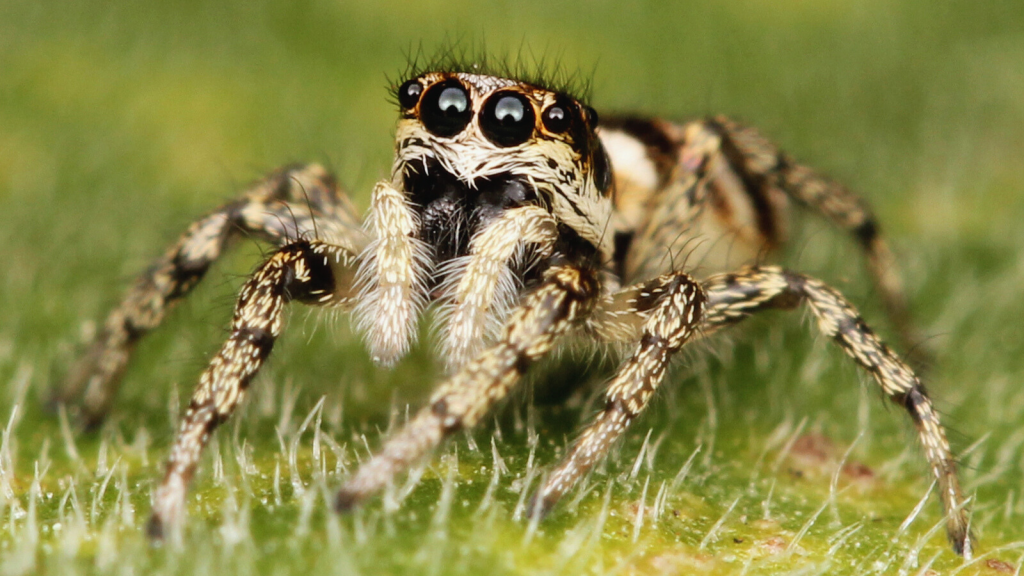Spiders often get a bad rap, sending shivers down the spines of many. But some eight-legged creatures are actually quite adorable. From fuzzy jumpers to colourful dancers, the world of spiders is full of surprisingly charming characters. These adorable arachnids come in a variety of shapes, sizes, and colours that might just make you reconsider your fear. In this list, we’ll introduce you to 15 of the cutest spiders from around the globe. Get ready to see these often-misunderstood creatures in a whole new light, and who knows? You might even find yourself falling for these pint-sized charmers.
Peacock Jumping Spider
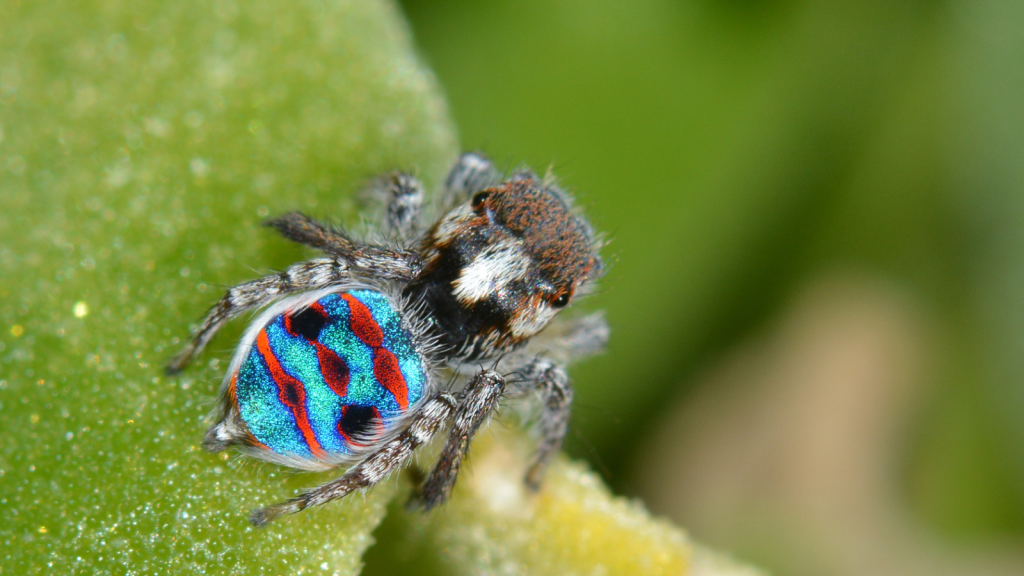
The peacock jumping spider is a tiny marvel of nature, measuring just 5mm in length. Despite its small size, it packs a big punch in the cuteness department. Males of this species are known for their vibrant blue and red colouring, which they show off in elaborate courtship dances. These spiders have large, forward-facing eyes that give them an almost puppy-like appearance. Interestingly, peacock jumping spiders have exceptional vision, able to see in colour and detect ultraviolet light, which helps them in their intricate mating rituals.
Zebra Spider
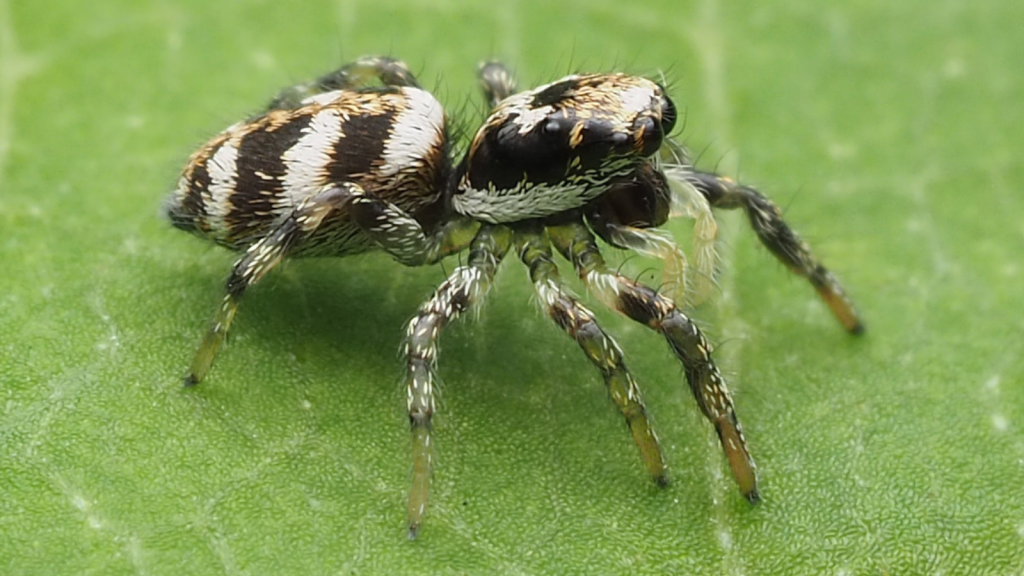
With its distinctive black and white stripes, the zebra spider looks like it’s wearing a fancy jumpsuit. These small jumping spiders are common in gardens across Europe and North America. They’re known for their curious nature and will often turn to look at you if you approach them. Zebra spiders are also excellent hunters, using their keen eyesight to stalk and pounce on prey. They can jump up to 25 times their own body length, an impressive feat that would be equivalent to a human jumping the length of a football field.
Ladybird Spider

Don’t let the name fool you – this isn’t a beetle, but a spider that looks like it’s wearing a ladybird costume. Female ladybird spiders have a bright red body with black spots, making them look like oversized ladybirds. They’re quite rare and can only be found in a few locations in southern England. Despite their small size, ladybird spiders can live for up to 20 years in the wild. Males of this species look completely different, with a black body and white markings, showcasing an extreme case of sexual dimorphism in the spider world.
Maratus Volans (Peacock Spider)

Often called the peacock spider, Maratus volans is a tiny Australian jumping spider known for its incredible courtship dance. Males have a colourful, fan-like flap on their abdomen that they raise and wave to attract females. This flap, combined with their large eyes and tiny size (about 5mm), gives them an undeniably cute appearance. Their dance moves are so impressive that videos of them have gone viral online. These spiders are also known for their “peek-a-boo” behaviour, where they hide behind leaves and pop out to surprise potential mates or prey.
Lucas the Spider
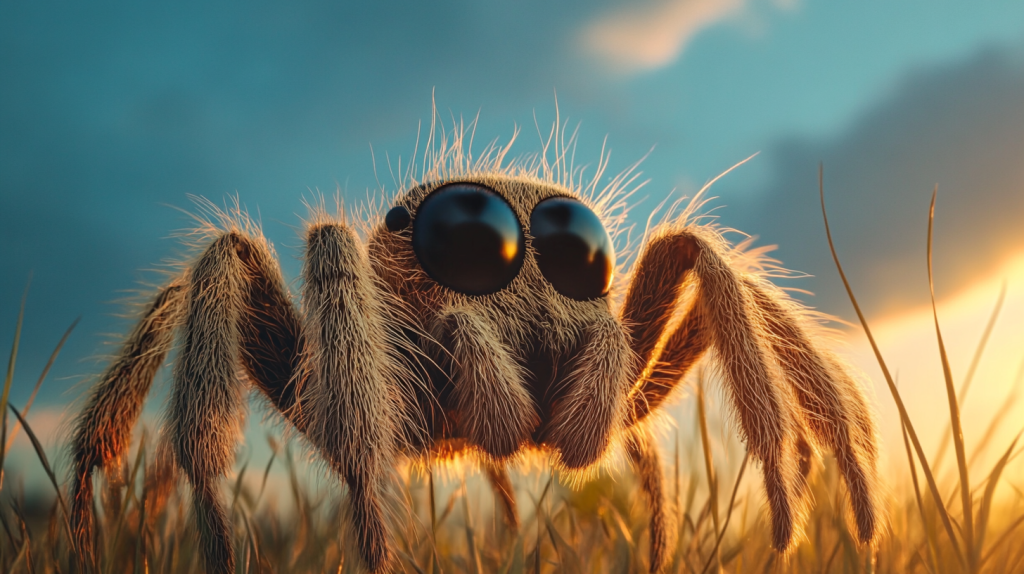
While not a real spider species, Lucas the Spider deserves a mention for changing perceptions of spiders worldwide. Created by animator Joshua Slice, Lucas is a cute, cartoon jumping spider with big eyes and a friendly personality. The character has become so popular that it’s helped many people overcome their fear of real spiders. Lucas shows how changing the way we present spiders can alter our perceptions of them. The character’s popularity has led to a line of plush toys and even an animated series, further helping to reshape public opinion about arachnids.
Phidippus Regius (Regal Jumping Spider)
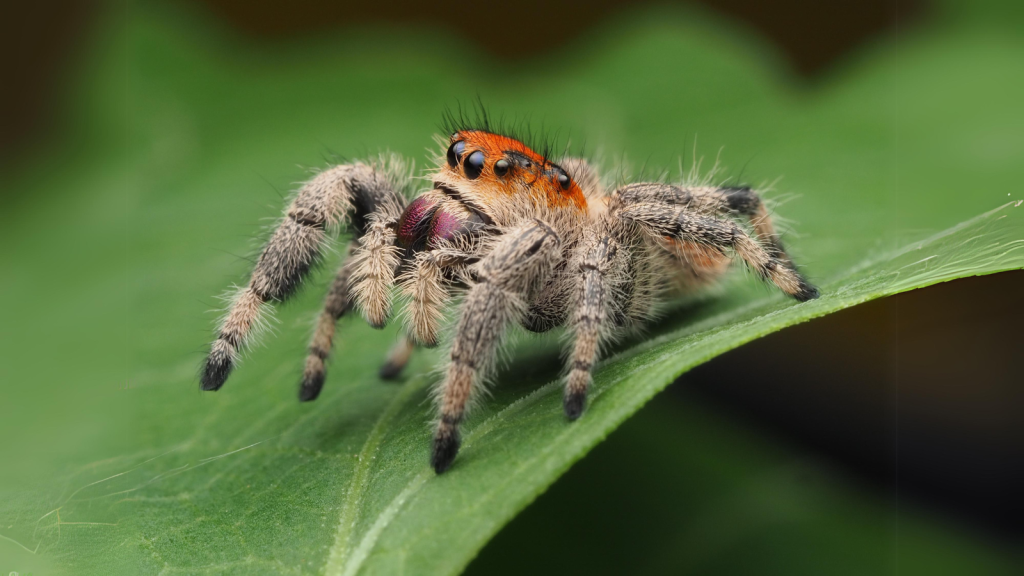
The regal jumping spider is one of the largest jumping spiders in North America, but don’t let that put you off. These fuzzy spiders have a teddy bear-like appearance with their furry bodies and big eyes. They come in a variety of colours, including black, grey, and orange. Regal jumping spiders are known for their intelligence and can even be kept as pets. They’ve been observed solving simple puzzles and remembering the solutions, showcasing cognitive abilities that are quite advanced for an arachnid.
Bagheera Kiplingi
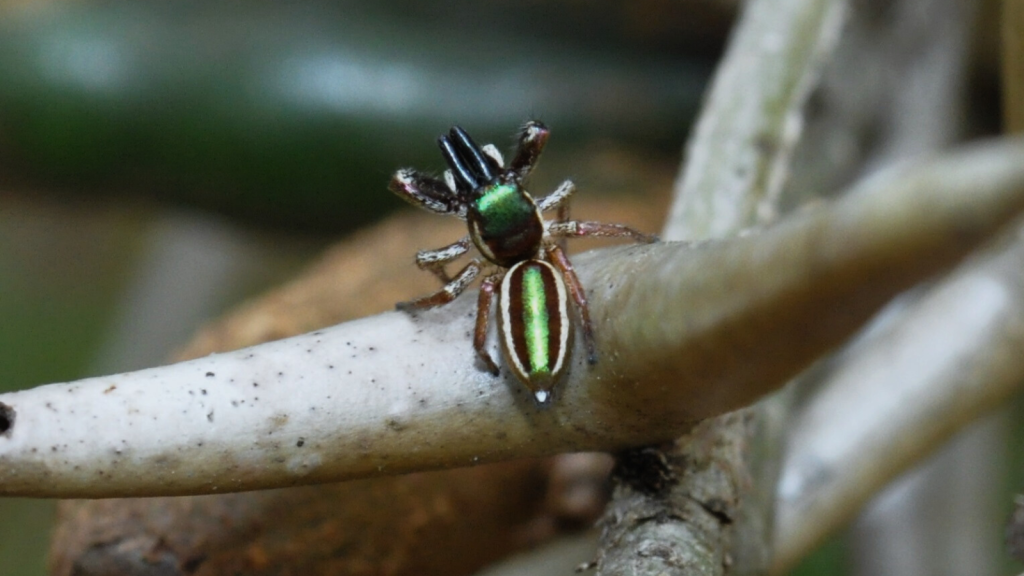
Named after the panther from “The Jungle Book”, Bagheera kiplingi is unique among spiders. It’s the world’s only known predominantly vegetarian spider. These Central American jumping spiders mainly eat Beltian bodies, nutritious nodules produced by acacia trees. Their plant-based diet and playful behaviour make them seem less threatening than their carnivorous cousins. Bagheera kiplingi has also been observed exhibiting social behaviour, with multiple spiders sometimes sharing the same acacia tree, a rarity in the typically solitary spider world.
Sparklemuffin Spider
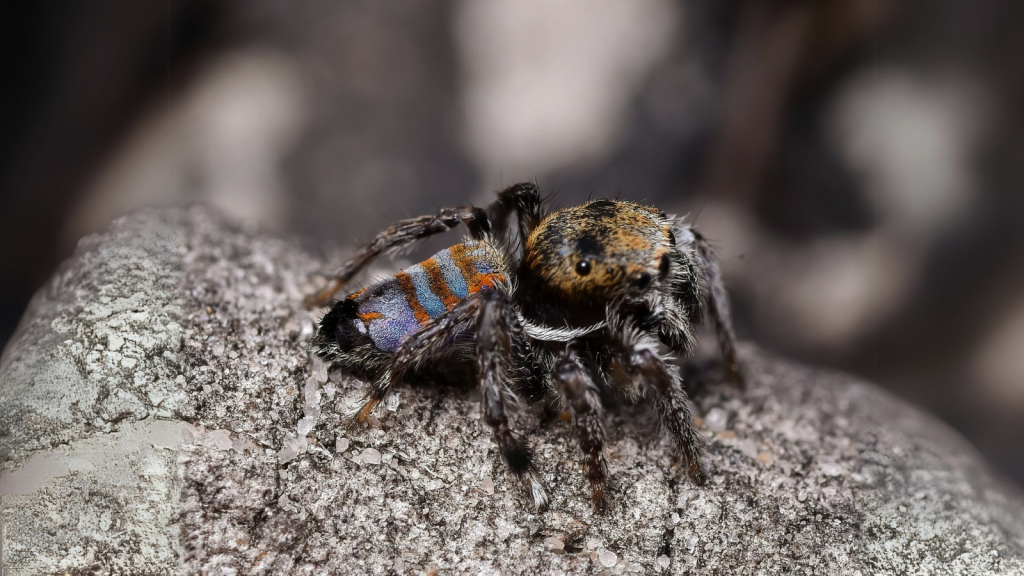
With a name like Sparklemuffin, how could this spider not be cute? Officially known as Maratus jactatus, this Australian peacock spider was nicknamed Sparklemuffin by its discoverers due to its shimmery appearance. Males have a blue and orange pattern on their abdomen that sparkles in the sunlight. Like other peacock spiders, Sparklemuffin performs an elaborate dance to woo females. The spider’s dance involves a complex series of zigzag movements and vibrational songs, created by rubbing body parts together, which are inaudible to human ears but captivating to female spiders.
Jumping Spider (Phidippus Audax)
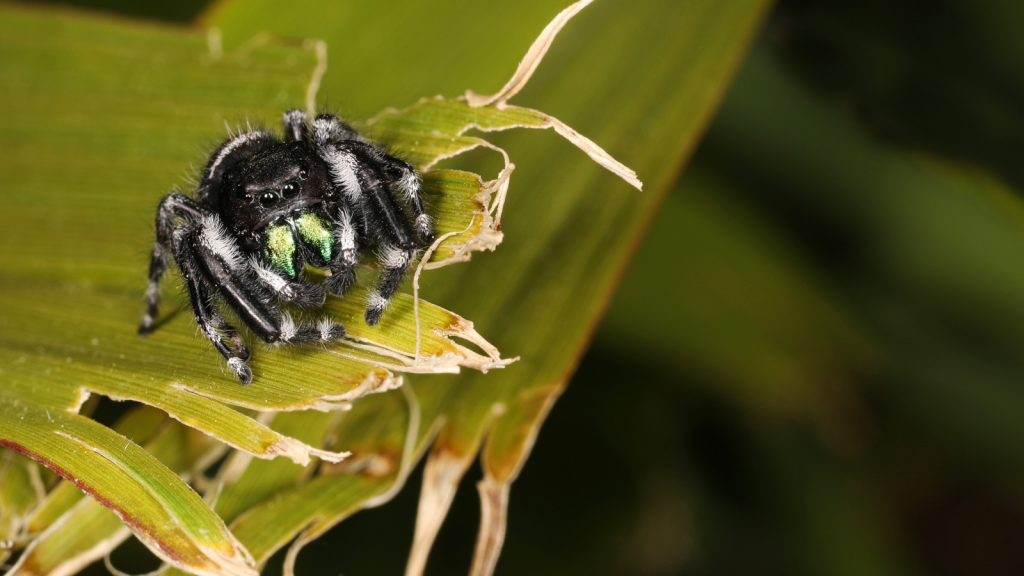
The bold jumping spider, or Phidippus audax, is a common sight in gardens across North America. These spiders have a fuzzy black body with white spots and striking green chelicerae (mouthparts). Their large, forward-facing eyes give them an almost cartoonish appearance. Bold jumping spiders are known for their curious nature and will often watch human observers intently. They’re also skilled hunters, capable of taking down prey much larger than themselves, including other spiders and small vertebrates.
Adanson’s House Jumper
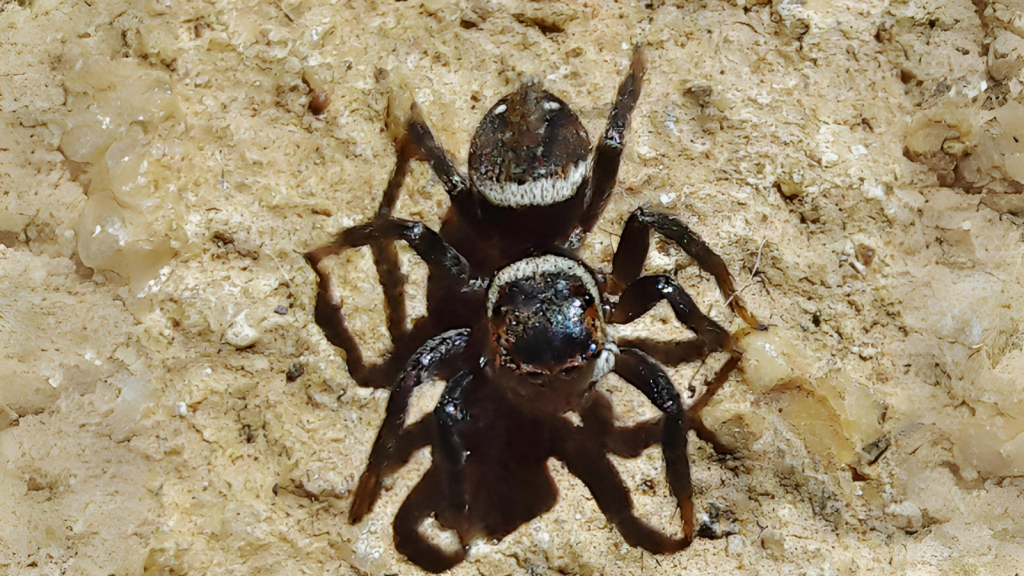
Adanson’s house jumper is a small spider commonly found in homes across Europe. These spiders have a distinctive appearance with a brown body and white stripes that almost look like a moustache. They’re known for their friendly behaviour and will often approach humans out of curiosity. These little spiders are excellent at controlling household pests. Adanson’s house jumpers have been observed learning and remembering the layout of their environment, using this knowledge to plan hunting strategies and escape routes.
Homalattus Coriaceus
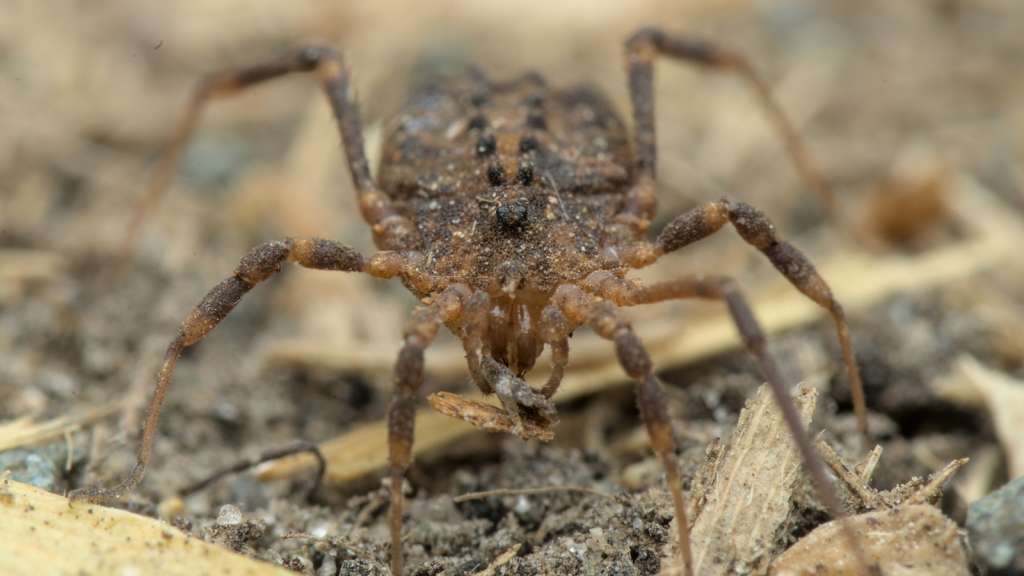
This tiny jumping spider from Southeast Asia looks like it’s wearing a Halloween costume. Homalattus coriaceus has a flat, disc-shaped body that resembles an ant’s head. This mimicry helps protect it from predators. Despite its strange appearance, its large eyes and small size give it an undeniably cute charm. The spider’s ant-like appearance is so convincing that it not only fools predators but also allows it to infiltrate ant colonies, where it can hunt without being detected.
Spiny Orb-Weaver Spider
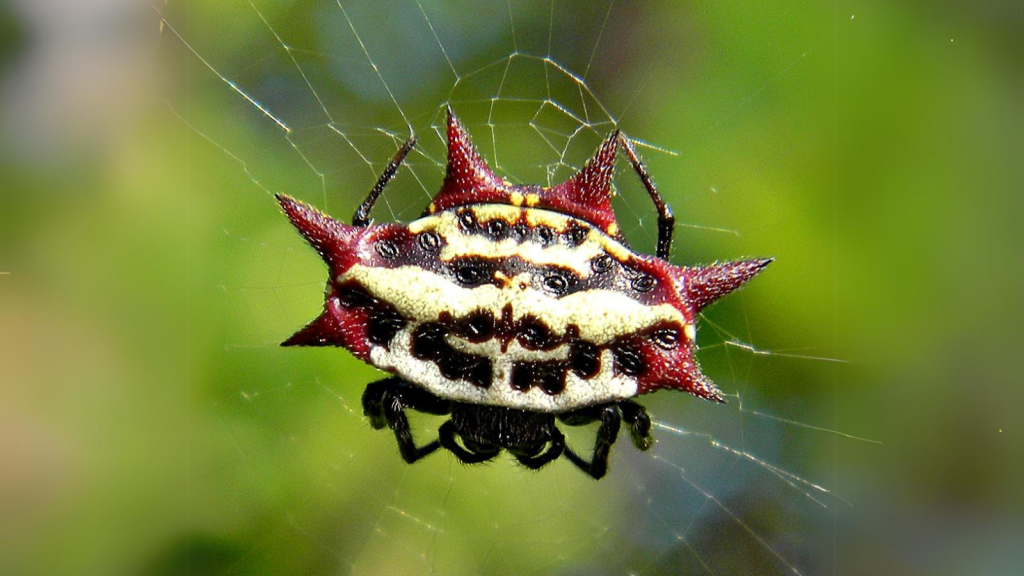
While not conventionally cute, the spiny orb-weaver spider has a quirky charm. These spiders have a crab-like appearance with spikes protruding from their abdomens. They come in a variety of bright colours, including orange, yellow, and white. Spiny orb-weavers are harmless to humans and are known for building intricate webs in gardens. Their spiky appearance isn’t just for show; the spines serve as a defence mechanism against predators and help break up the spider’s outline, making it harder to spot.
Rabbit-Eared Spider

The rabbit-eared spider, found in South America, gets its name from the two distinctive “ears” on its head. These projections are actually modified hairs that may help with camouflage. Despite their unusual appearance, rabbit-eared spiders have a certain cartoonish charm. They’re small, harmless to humans, and spend most of their time hiding under leaves. The “ears” of this spider can be moved independently, allowing it to better detect vibrations and air currents, which helps in hunting and avoiding predators.
Jewel Spider
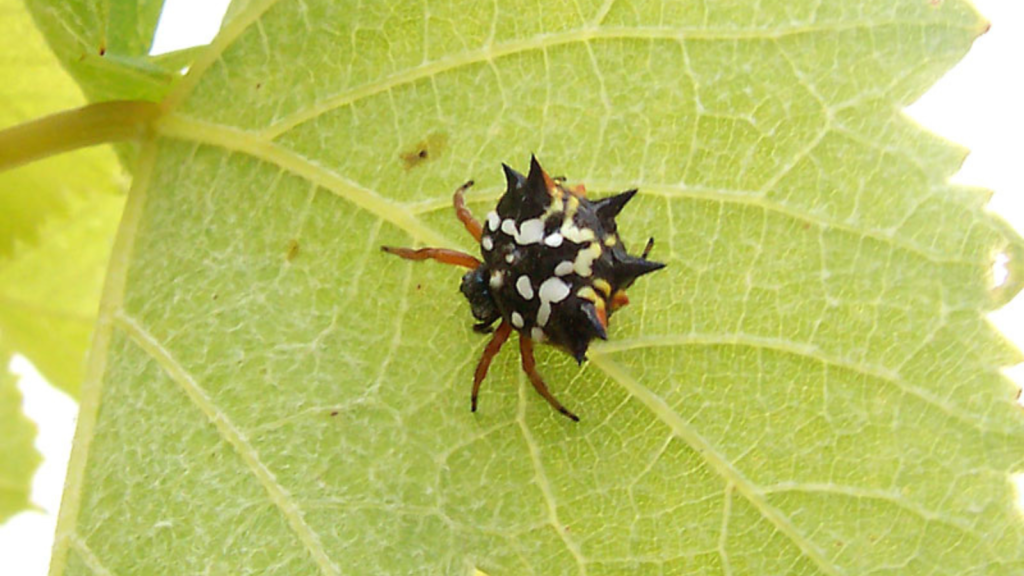
The jewel spider, or Austracantha minax, looks like a living gemstone. These Australian spiders have a distinctive star-shaped abdomen decorated with spikes and bright colours. While their appearance might seem intimidating, jewel spiders are small and harmless. Their intricate patterns and colours make them a favourite among macro photographers. The jewel spider’s unique shape isn’t just for show; it helps deter predators and can make the spider look larger than it actually is when viewed from certain angles.
Habronattus Coecatus
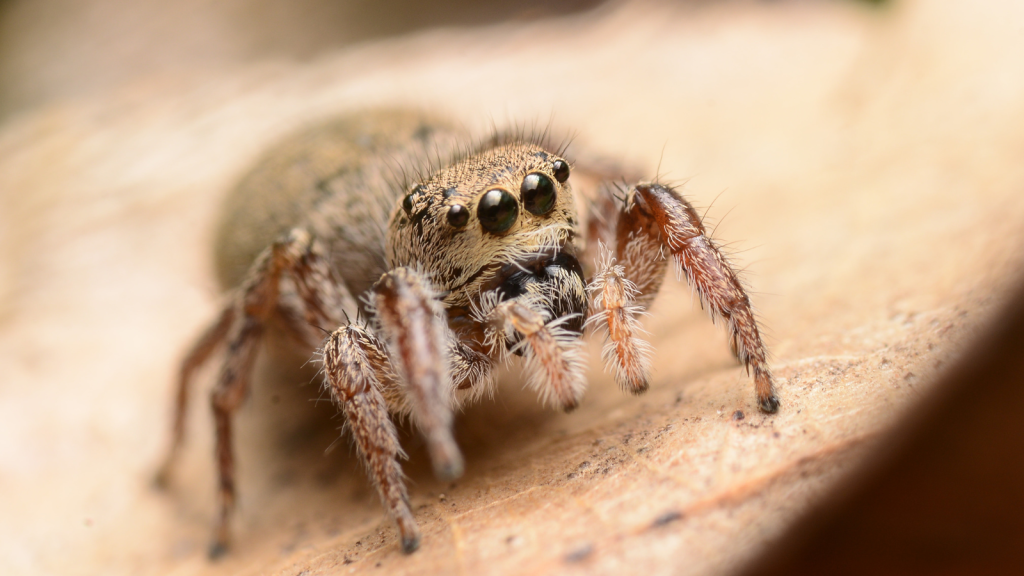
This North American jumping spider might not look special at first glance, but males of this species have a secret superpower. When trying to attract a mate, male Habronattus coecatus perform an elaborate dance that includes flashing vibrant blue and red colours hidden under their front legs. This surprising display, coupled with their fuzzy appearance and large eyes, gives these tiny spiders an endearing quality. Female H. coecatus are incredibly picky, with studies showing that they may reject up to 19 out of 20 male suitors, making the males’ elaborate courtship displays all the more crucial for the species’ survival.

